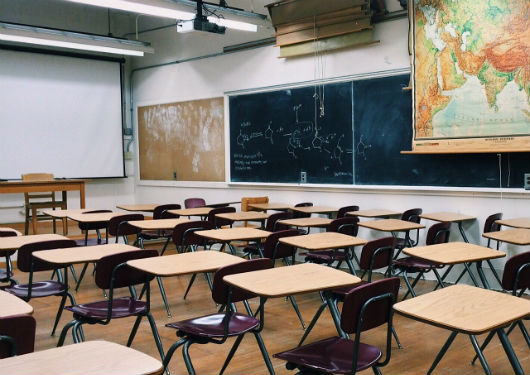One-to-one instruction is very intense. With only one student in each class, every student has the...
What Exactly Is One-to-One Instruction?
Education is very essential to your children and their future. However, not all students are the same. Some advance more quickly, others need more time, and the rest fall somewhere in between.

Those students who normally take a bit more time to understand a certain concept often need a significant amount of attention from the teacher. If they're not given the attention they need, they might fail in their tests and become frustrated. One-to-one instruction ensures the students interacts with the teacher individually, so that each can learn and understand concepts at their own pace and in their own way.
Although many in education characterize one-to-one instruction as an individual student interacting with a computer screen and use technology to provide the personalized instruction, Brightmont Academy offers one-to-one instruction structured as one teacher working with one student. Each lesson is completely customized for that individual student.
There are many benefits to enrolling in schools with one-to-one instruction where one teacher works with one student exclusively. Some of these benefits include:
1. High quality interaction where the student feels that he or she is heard.
With a one-to-one learning environment, the student is able to communicate open and honestly with his or her instructor. Due to the personal attention, the instructor is more committed to listening to and helping the student and giving them the help and attention they need.
In many cases, the conversations are student driven. The student has control over the questions they ask and has time to digest the feedback they receive from the instructors.
2. The teacher is able to gauge the student's progress and mastery of the subject(s).
It's important to check the progress of the student from time to time. The teacher is able to gauge the success and struggles of the student, even if the student chooses not to volunteer to respond. When the student is performing poorly, the instructor will know, make corrections,and adjust the lesson plans and projects so as to meet the student's pacing and need for reteaching.
3. It gives the students the opportunity to step up and not rely on others.
Some students normally rely on other, and unfortunately often copy someone else's work during tests. The student might be afraid to confide in the teacher or to seek clarification on a certain subject that he or she didn't quite understand if peers can hear.
However, in a one-to-one school, the student does not rely on peers and is responsible for answering every question. If the student doesn't understand a certain concept or lesson, they can simply ask the teacher for further clarification in a private setting where there is no pressure to pretend understanding or to pass to another student.
As simple as this process is, this increases a student's personal responsibility over their learning, and builds confidence.
4. It avoids overstimulation and eliminates distractions.
Students normally get interrupted by their peers from time to time. This can greatly affect their ability to understand concepts in class, and cause frustration when they are ready to move forward more quickly.
Without the distraction and overstimulation of a room full of peers, students are able to focus all attention on their instructor and the material being taught. This can help the students to perform better on assignments, and their tests and exams.

5. Low stress environment
You will realize that students can perform poorly if they are learning in a stressful environment. Through one-to-one interactions, students learn to trust their teachers and are given a completely safe place to openly share their problems.
More often than not, some students fear answering questions in a classroom setting with peers where they might be perceived as a "know-it-all." Others fear making mistakes potentially feeling embarrassed in front of their peers or teacher, so they hesitate to take the kinds of risks that lead to greater understanding. However, with one-to-one instruction, the student can freely express themselves to the instructor and get the help and attention they need.
6. If the student is absent, the class will not go on.
A student might be absent due to several reasons. When the student is absent, instruction pauses until the student is able to return. The class will not go on, and the lesson will not be missed.
7. Ability to personalize conversations and assignments.
Students are not only able to address the things that they do not understand, but they're also able to curate conversations with the instructor in order to incorporate their interests.
As a result of this, the student can actually develop their course schedules, projects, reading lists and other class elements based on personal interests, resulting in greater engagement and motivation.
8. The instructor is able to adapt to the student's communication style.
One-to-one interactions give the student ample opportunities to practice their interpersonal communication skills. The instructor is able to adapt to the student's communication style, and to allow the right amount of "wait time" after asking questions so that they student can process the question and provide a thoughtful answer.
In one-to-one class settings, the students do not need to decode the messages their instructor give them. They don't have to figure out how to communicate back to the teacher, and can practice or seek greater clarification when they haven't worded a responses exactly on target. With one-to-one instruction, communication and sharing of ideas are aligned with the student first.
One-to-one schools such as Brightmont Academy are designed with the student in mind. Parents should clarify whether they are getting a true one-to-one instruction model when comparing programs to ensure that their child gets these benefits of the undivided attention of the teacher.





